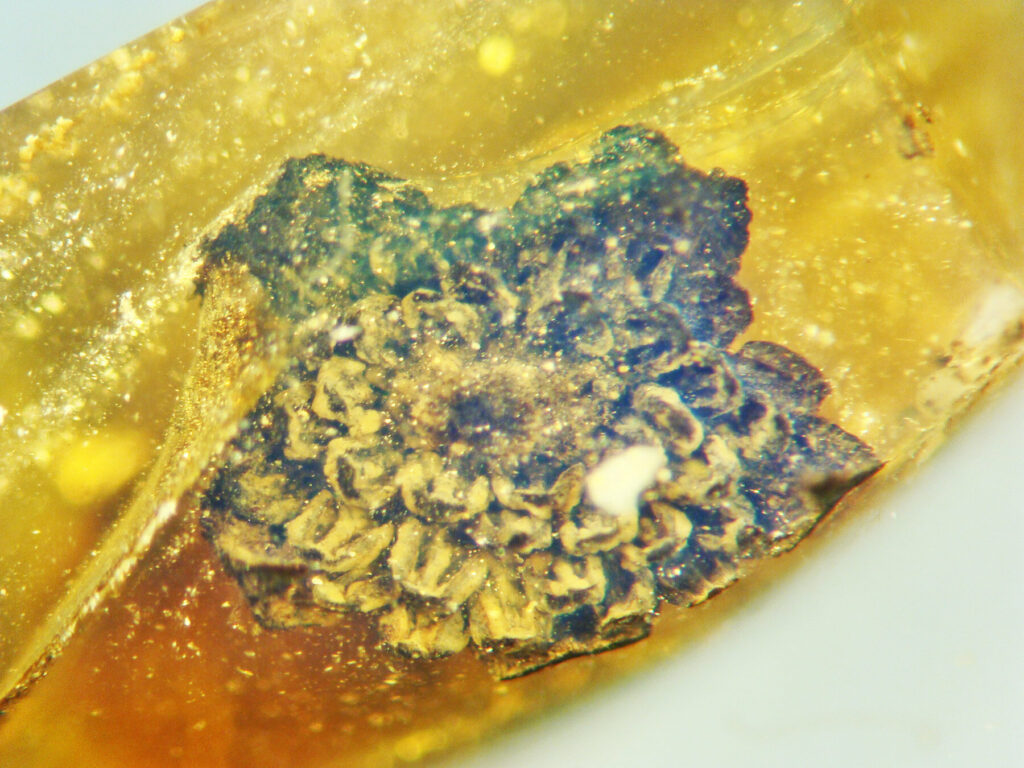New research at the Oregon State University (OSU) discovered a new species and genus of fossil flower from a specimen encased in Burmese amber.

Christened Valviloculus pleristaminis, the flower is pretty tiny, around 2 mm across for the specimen, a male. However, it boasts some 50 segments arranged in a spiral pattern with vertical pollen-bearing anthers.
Ambered
“This isn’t quite a Christmas flower but it is a beauty, especially considering it was part of a forest that existed 100 million years ago,” said George Poinar Jr., professor emeritus in the OSU College of Science.
“Despite being so small, the detail still remaining is amazing. Our specimen was probably part of a cluster on the plant that contained many similar flowers, some possibly female.”
The fossil consists of an egg-shaped floral cup, the outer layer of petal-like structures (tepals), and anthers made up of two chambers. These anthers hold pollen sacs that are meant to split open “via laterally hinged valves”.
Its name reflects the flower’s structure. ‘Valva’ is a Latin word that is the root of ‘valve’, the authors explain, ‘loculus’ means compartment, ‘plerus’ is ‘many’, while ‘staminis’ refers to its male sex organs. The flower was encased in amber on the bygone supercontinent Pangaea. Although its current location was in western Burma, its original source lies some 4,000 miles across the ocean from Australia to Southeast Asia, Poinar explains.

The geological structure it formed in is known as the West Burma Block, and eventually broke away from Gondwana around 200 to 500 million years ago. The exact date is unknown, but the current discovery can help.
Valviloculus pleristaminis belongs to the angiosperm family, a group of vascular plants with stems, roots, and leaves, which fertilize and develop their eggs inside the flower. Angiosperms only evolved and diversified about 100 million years ago, meaning the block couldn’t have wrenched free before then, Poinar explains. This is a much later date than those currently being considered, so it could spur renewed effort — and interest — into dating the event.
The paper “Zygadelphus aetheus gen. et sp. nov., an unusual fossil flower from mid-Cretaceous Myanmar amber” has been published in the Journal of the Botanical Research Institute of Texas.









